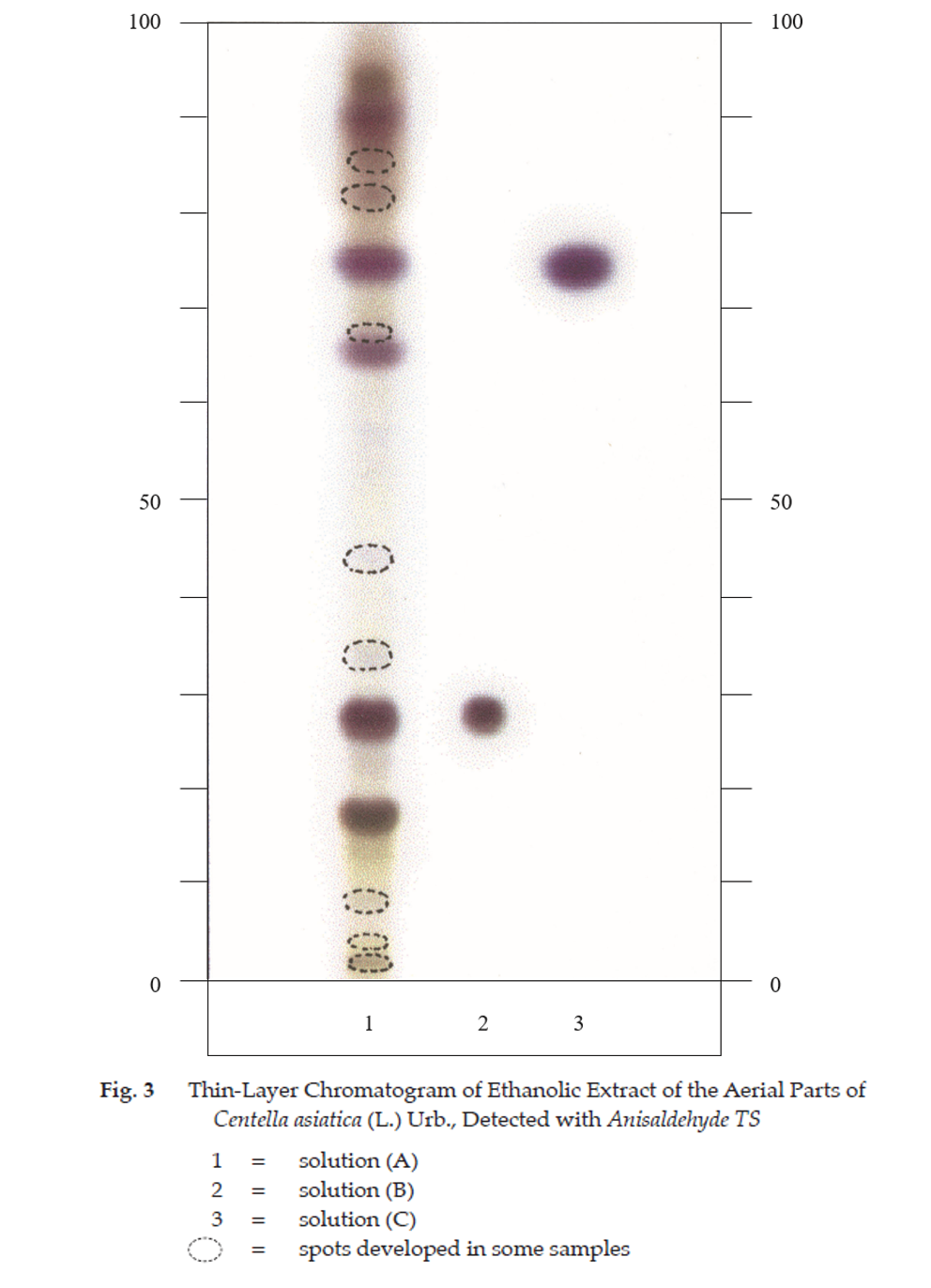ตำรามาตรฐานยาสมุนไพรไทย
Thai Herbal Pharmacopoeia
สำนักยาและวัตถุเสพติด กรมวิทยาศาสตร์การแพทย์ กระทรวงสาธารณสุข
Bureau of Drug and Narcotic, Department of Medical Sciences, Ministry of Public Health(Tinospora crispa (L.) Hook.f. & Thomson)
(Nelumbo nucifera Gaertn.)
(Centella asiatica (L.) Urb.)
(Centella Dry Extract)
(Centella Cream)
(Mesua ferrea L.)
(Piper sarmentosum Roxb.)
(Piper sarmentosum Roxb.)
(Pterocarpus santalinus L. f.)
(Santalum album L.)
(Senna tora (L.) Roxb.)
(Senna alata (L.) Roxb.)
(Senna Alata Tea)
(Piper retrofractum Vahl)
(Myristica fragrans Houtt)
(Andrographis paniculata (Burm. f.) Nees)
(Andrographis Capsules)
(Allium ascalonicum L.)
(Ocimum tenuiflorum L.)
(Curcuma longa L.)
(Turmeric Capsules)
(Turmeric Dry Extract)
(Turmeric Dry Extract Capsules)
(Arcangelisia flava (L.) Merr.)
(Curcuma sp.)
Harrisonia perforata (Blanco) Merr.
(Aristolochia pierrei Lecomte)
(Zingiber officinale Roscoe)
(Ginger Capsules)
(Ginger Tea)
(Cassia fistula L.)
(Nardostachys jatamansi (D. Don) DC.)
(Angelica sinensis (Oliv.) Diels)
Artemisia annua L.
(Ligusticum sinense Oliv. cv. Chuanxiong)
(Neopicrorhiza scrophulariiflora Pennell)
(Atractylodes lancea (Thunb.) DC.)
(Aucklandia lappa Decne)
(Terminalia chebula Retz.)
(Angelica dahurica (Hoffm.) Benth. & Hook. f. ex Franch. & Sav. var. dahurica)
(Kaempferia parviflora Wall. ex Baker)
(Hibiscus sabdariffa L.)
(Roselle Tea)
(Allium sativum L.)
(Zingiber zerumbet (L.) Sm.)
(Wurfbainia testacea (Ridl.) Škorničk.& A. D. Poulsen)
(Cannabis sativa L.)
(Myristica fragrans Houtt)
(Dracaena cochinchinensis (Lour.) S. C. Chen)
(Ficus racemosa L.)
(Hyptis suaveolens (L.) Poit.)
Clerodendrum indicum (L.) Kuntze
(Phyllanthus emblica L.)
(Citrus hystrix DC.)
(Citrus hystrix DC.)
(Areca catechu L.)
(Momordica charantia L.)
Moringa oleifera Lam.
(Aegle marmelos (L.) Corrêa)
(Solanum trilobatum L.)
(Morus alba L.)
Gynostemma pentaphyllum(Thunb.)
Makino
(Clinacanthus nutans (Burm. f.) Lindau)
(Cissus quadrangularis L.)
(Mimusops elengi L.)
(Zingiber montanum (J. König) Link. ex A. Dietr.)
(Piper betle L.)
(Capsicum annuum L.)
(Capsicum Oleoresin)
(Capsicum Gel)
(Piper nigrum L.)
(Piper nigrum L.)
(Eurycoma longifolia Jack)
(Thunbergia laurifolia Lindl.)
(Piper wallichii (Miq.) Hand.-Mazz.)
Senna garrettiana (Craib) H. S. Irwin & Barneby
(Terminalia bellirica (Gaertn.) Roxb.)
(Terminalia chebula Retz.)
(Caesalpinia bonduc (L.) H. Roxb.)
(Tarlmounia elliptica (DC.) H. Rob., S. C. Keeley, Skvaria & R. Chan)
(Hog Creeper Vine Dry Extract Capsiles)
(Hog Creeper Vine Dry Extract)
(Brachypterum scandens (Roxb.) Miq.)
(Lepidium sativum L.)
(Nigella sativa L.)
(Cuminum cyminum L.)
(Foeniculum vulgare Mill.)
(Plantago ovata Forssk.)
(Pimpinella anisum L.)
(Carum carvi L.)
(Anethum graveolens L.)
(Trachyspermum ammi (L.) Sprague)
Albizia procera (Roxb.) Benth.
(Acorus calamus L.)
(Tiliacora triandra (Colebr.) Diels)
Cyanthillium cinereum (L.) H. Rob.
(Orthosiphon aristatus (Blume) Miq.)
Murdannia loriformis (Hassk.) R. S. Rao & Kammathy
(Capparis micracantha DC.)
(Chrysopogon zizanioides (L.) Roberty)
(Cyperus rotundus L.)
(Cannabis sativa L.)
(Syzygium aromaticum (L.) Merr. & L. M. Perry)
(Boesenbergia rotunda (L.) Mansf.)
(Acanthus ebracteatus Vahl)
(Acanthus ilicifolius L.)
(Kaempferia galanga L.)
(Curcuma comosa Roxb.)
Betula alnoides Buch.-Ham. ex D. Don
Cannabis sativa L.
Carthamus tinctorius L
Mitragyna speciosa (Korth.) Havil
Mallotus repandus (Rottler) Müll. Arg
Azadirachta indica A. Juss. var. siamensis Valeton
Azadirachta indica A. Juss. var. siamensis Valeton
Punica granatum L.
Rhinacanthus nasutus (L.) Kurz
Baliospermum solanifolium (Burm.) Suresh
Curcuma aeruginosa Roxb
Boesenbergia kingii Mood & L. M. Prince
Senegalia rugata (Lam.) Britton & Rose
Acacia concinna (Willd.) DC.
Senegalia rugata (Lam.) Britton & Rose
Acacia concinna (Willd.) DC.
Senna alexandriana Mill. var. alexandriana
Cassia acutifolia Delile, Cassia angustifolia Vahl
Butea superba Roxb. ex Willd.
[Plaso superba (Roxb. ex Willd.) Kuntze, Rudolphia superba (Roxb. ex Willd.) Poir.
Pueraria candollei Graham
ex Benth. var. mirifica (Airy Shaw & Suvat.) Niyomdham
Streblus asper Lour.
Suregada multiflora (A. Juss.) Baill. (Gelonium
multiflorum A. Juss.
Centella is the dried aerial part of Centella asiatica (L.) Urb. (C. coriacea Nannf., Hydrocotyle asiatica L., H. lunata Lam., Trisanthus cochinchinensis Lour.) (Family Umbelliferae), Herbarium Specimen Number: DMSC 1461, Crude Drug Number: DMSc 1261.
Constituents Centella contains triterpenoid saponins, including asiaticoside and madecassoside and their aglycones which are asiatic acid and madecassic acid, respectively. It also contains volatile oil, pectin, trace of alkaloids, etc.
Description of the plant (Figs. 1a, 1b) Slender trailing herb, rooting at nodes.Leaves simple, 1 to 6 in rosette at each node, orbicular to reniform, more or less cupped, glabrous and shiny above, paler beneath,1 to 7 cm in diameter, apex rounded, base cordate, margin entire, crenate, or usually repand-dentate; petiole (1–)4 to 10(–50) cm long. Inflorescence in single umbel, bearing solitary or 2 to 5 together in the axils; peduncle shorter than petiole. Flowers usually 3, middle one sessile, lateral ones pedicellate; involucres 2, ovate; petals 5, minute, white or rose-tinged; ovary laterally flattened, style filiform. Fruit small, compressed, about 8 mm long, orbicular to ellipsoid, manifestly ribbed, slightly hairy when young.
Description Odour, characteristic; taste, slightly bitter-sweet.
Macroscopical (Fig. 1a) Aerial part, greenish brown, rough and brittle; stem thin, long, twisted; leaves rennate or cordate, brittle; petiole long.
Microscopical (Figs. 2a, 2b, 2c, 2d) Transverse section of the fresh leaf shows upper epidermis, a layer of rectangular cells, polygonal and straight-walled in surface view; stomata, anisocytic, some paracytic and rarely anomocytic. Palisade cells, a layer of large columnar cells. Spongy cells, parenchymatous, some containing calcium oxalate crystals in the forms of rosette aggregate or prism. Collenchyma, occurring beneath upper and lower epidermises in the midrib. Vascular bundles, xylem in the upper part and phloem in the lower part; vessels, annular, spiral, scalariform, or reticulate. Lower epidermis, a layer of rectangular cells, slightly wavy-walled in surface view; stomata, anisocytic, paracytic or anomocytic. Oil ducts, occurring beneath collenchyma in the middle of midrib.
Transverse sections of the fresh petiole and stolon show epidermal layer with cuticle. Collenchyma, present. Parenchyma containing chloroplastids, oil droplets, spreading circularly beneath collenchyma. Vascular bundles, collateral. The centre of petiole, hollow. Unicellular trichomes may also be found, but rare, in the section near the base of petiole.
Centella in powder possesses the diagnostic microscopical characters of the unground drug.
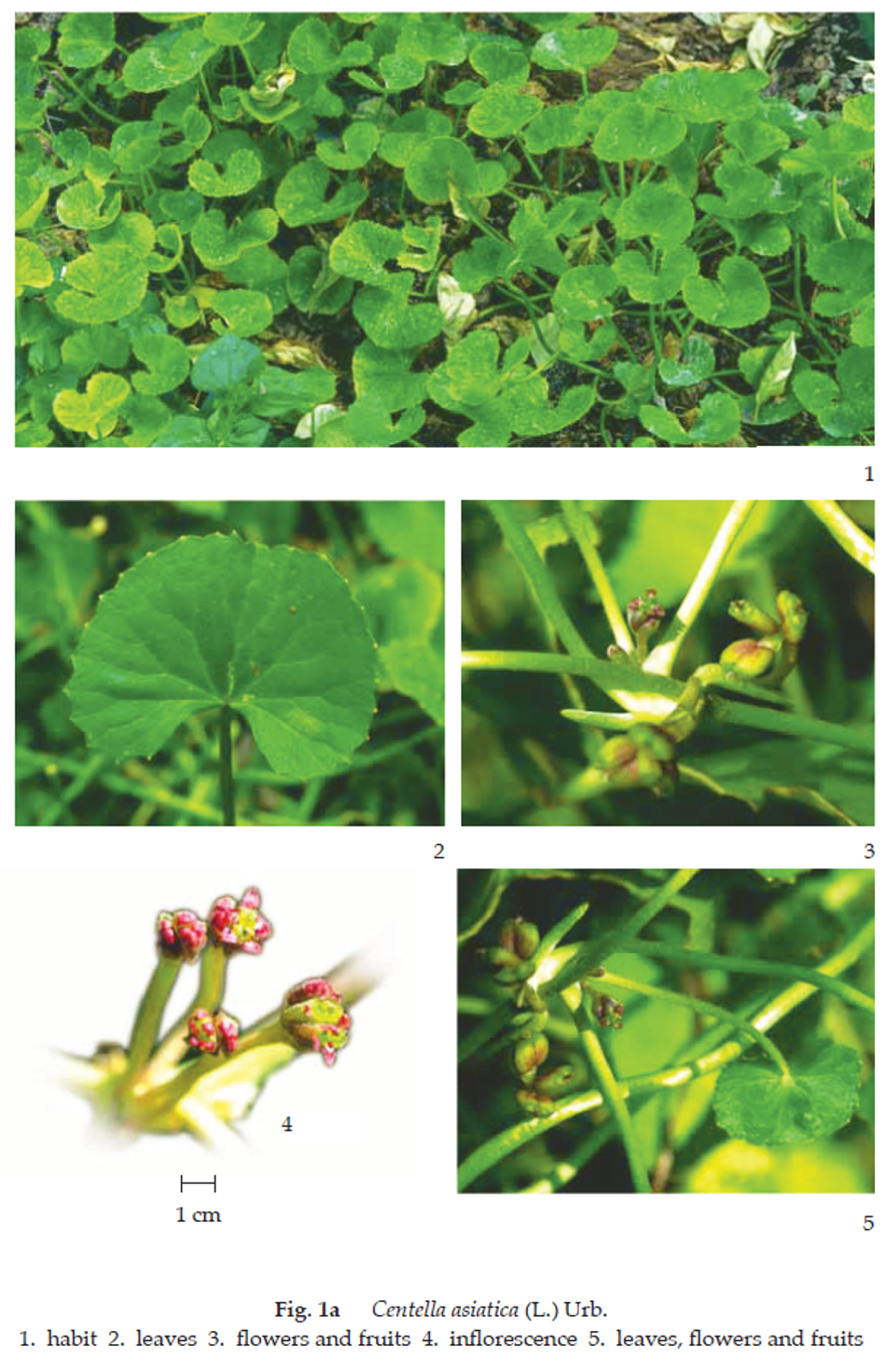
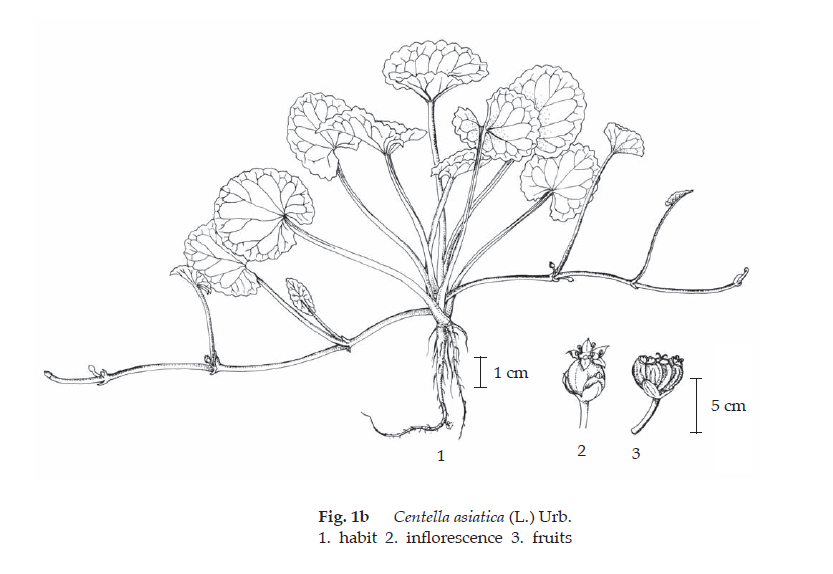
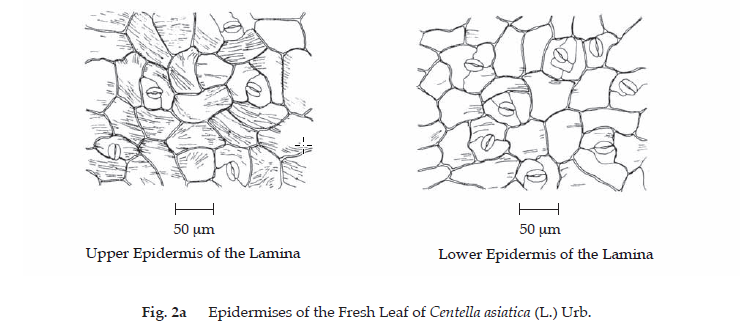
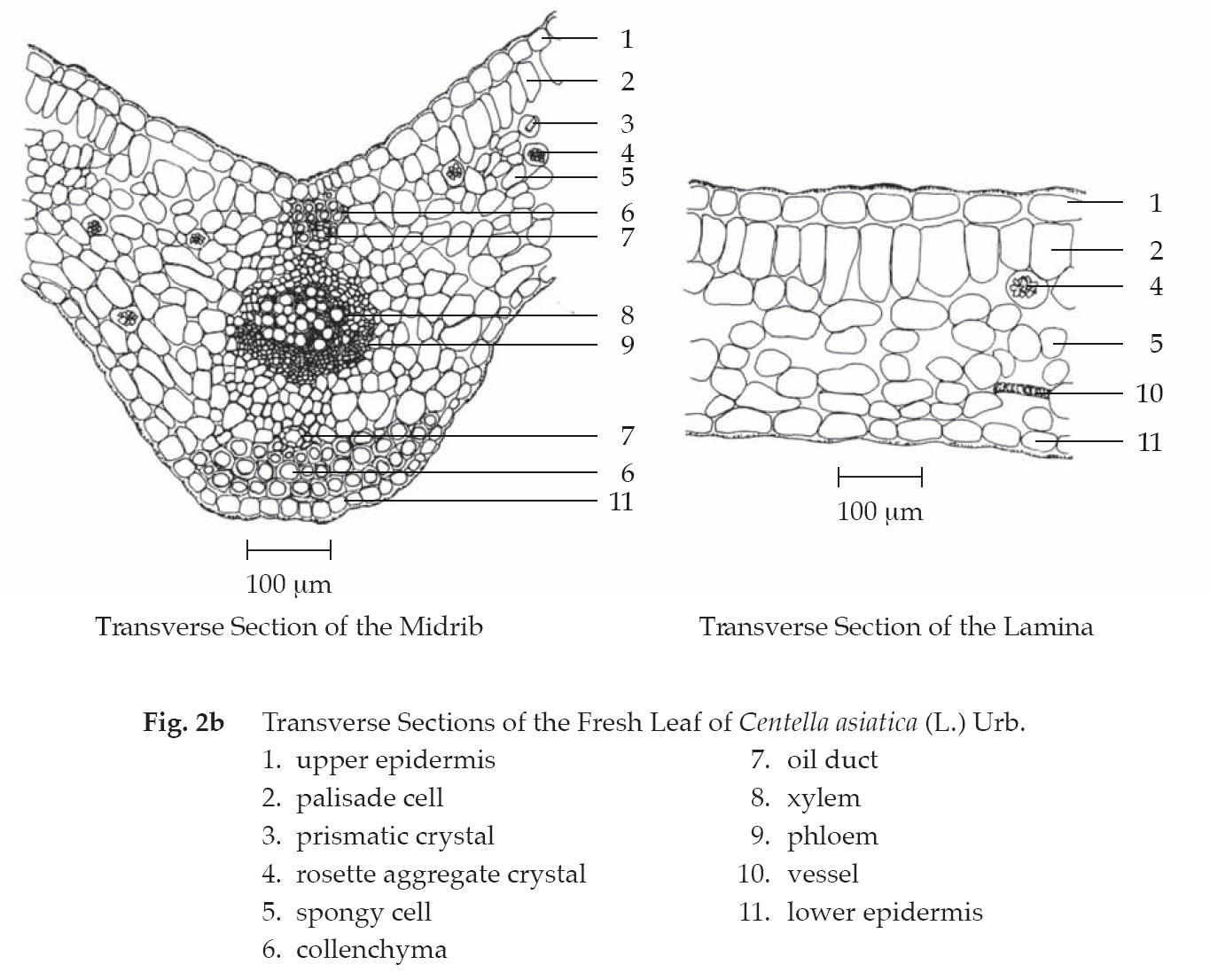
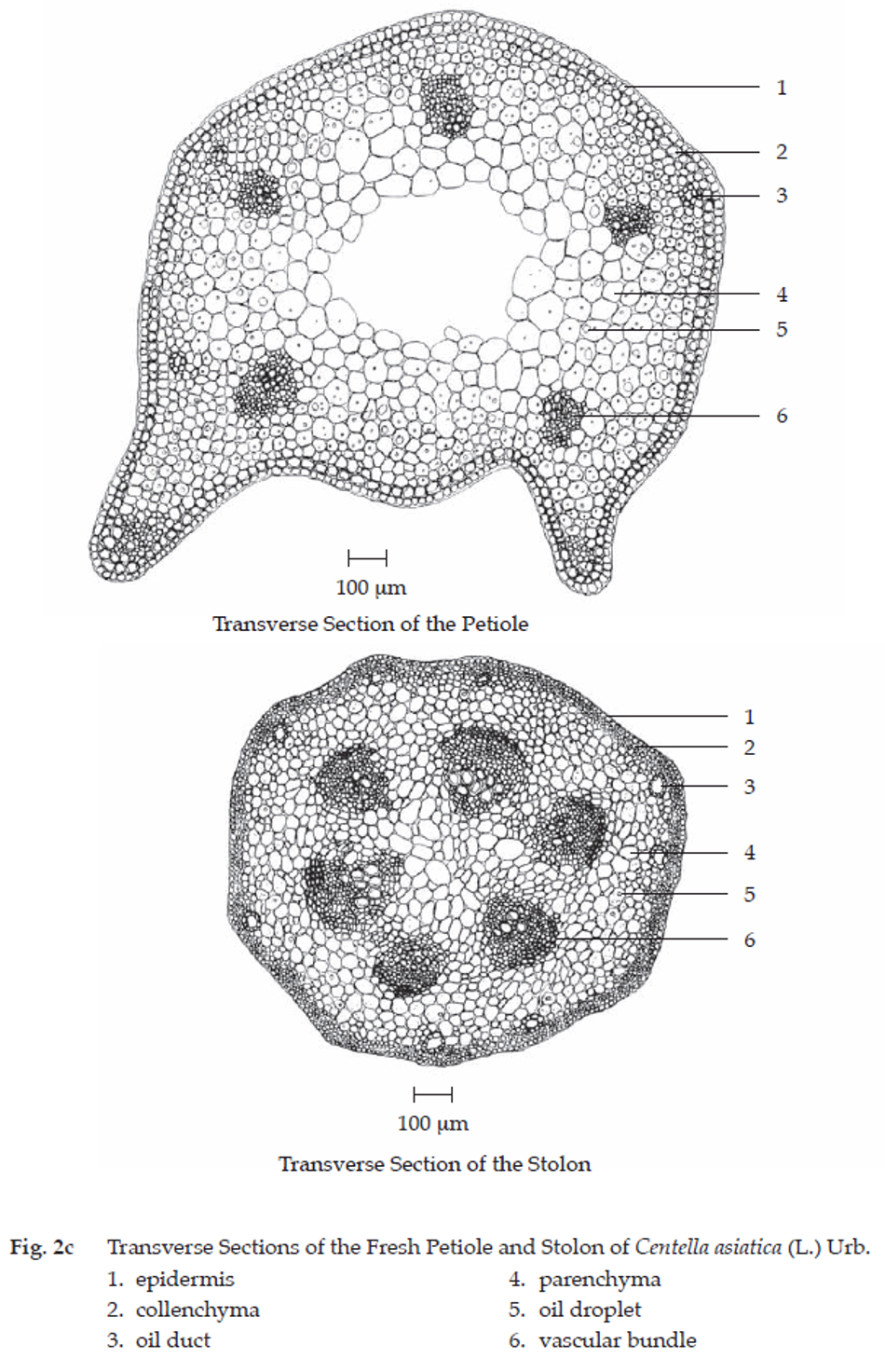
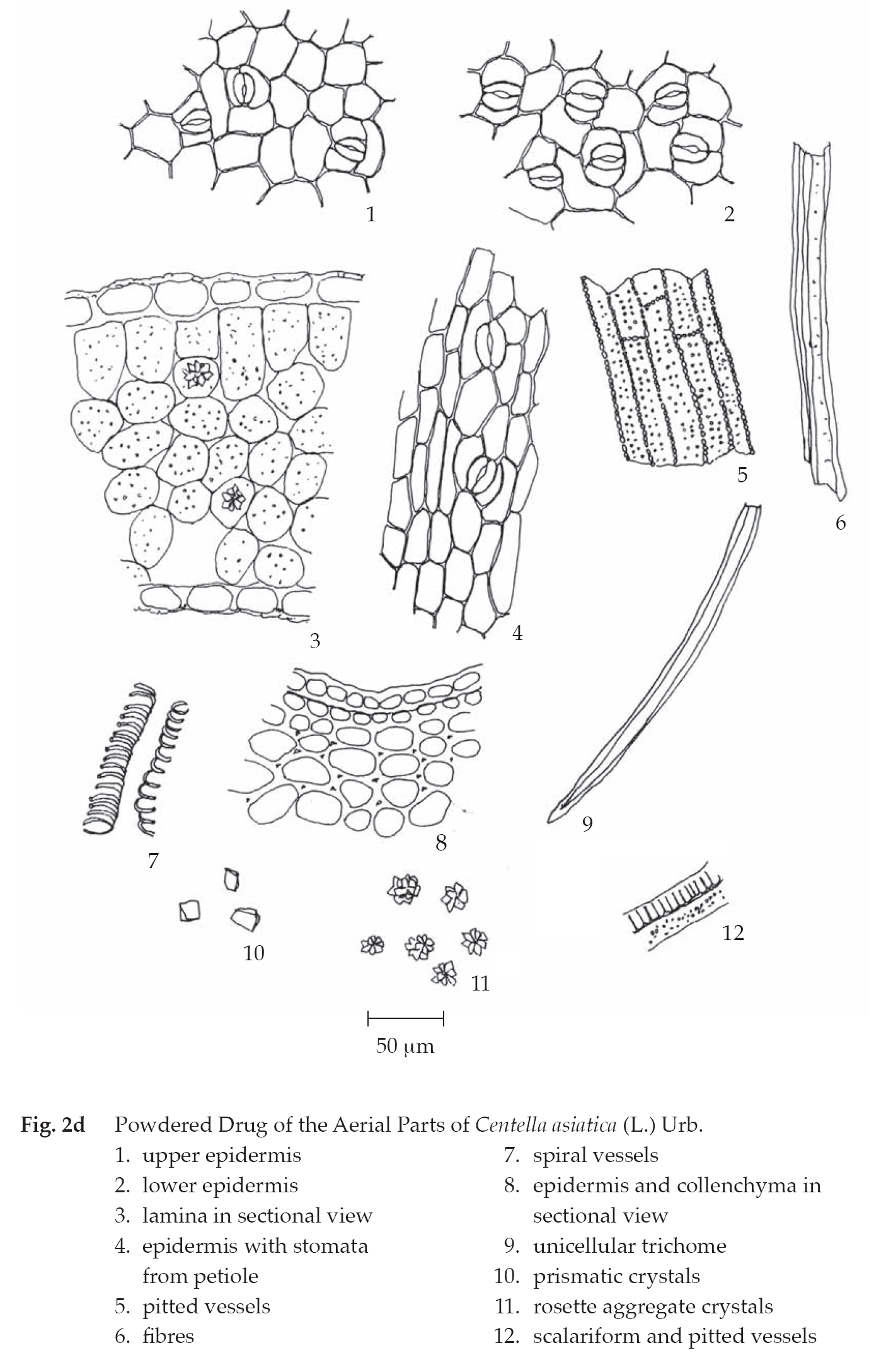
Warning Excessive oral administration should be avoided during pregnancy and lactation.
Packaging and storage Centella shall be kept in well-closed containers, protected from light, and stored in a dry place.
Identification
A. Warm 500 mg of the sample, in powder, with 5 mL of ethanol for 5 minutes and filter (solution 1). To 2 mL of solution 1, add a few drops of sulfuric acid: a green colour develops.
B. Evaporate 2 mL of solution 1 to dryness and dissolve the residue in 2 mL of acetic anhydride. Add slowly 1 mL of sulfuric acid to form two layers: a green colour develops in the upper layer and a brownish red ring forms at the zone of contact.
C. Shake vigorously 500 mg of the sample, in powder, with 10 mL of water: a long lasting foam is produced.
D. Carry out the test as described in the “Thin-Layer Chromatography” (Appendix 3.1), using silica gel G as the coating substance and a mixture of 60 volumes of chloroform, 28 volumes of methanol and 4 volume of water as the mobile phase. Apply separately to the plate, 5 µL each of the following solutions. Prepare solution (A) by refluxing 1 g of the sample, in powder, with 20 mL of ethanol for 10 minutes and filtering. Evaporate the filtrate under reduced pressure at 40° until dryness, and dissolve the residue in 4 mL of ethanol. For solution (B), dissolve 1 mg of asiaticoside in 2 mL of ethanol. For solution (C), dissolve 1 mg of asiatic acid in 2 mL of ethanol. After removal of the plate, allow it to dry in air. Spray the plate with anisaldehyde TS and heat at 105° for 5 minutes. The chromatogram obtained from solution (A) shows a purple spot (hRf value 27 to 28) and a violet spot (hRf value 72 to 74) corresponding to the asiaticoside and the asiatic acid spots from solutions (B) and (C), respectively. Several other spots of different colours are observed (Table 1); see also Fig. 3.
Table 1 hRf Values of Components in Ethanolic Extract of the Aerial Parts of Centella asiatica (L.) Urb.
| Spot | hRf Value | Detection |
| Anisaldehyde TS | ||
| 1 | 2 | green |
| 2 | 5 | green |
| 3 | 8 | green |
| 4 | 16 | green |
| 5* | 27-28 | purple |
| 6 | 33-34 | violet |
| 7 | 43 | violet |
| 8 | 63-64 | violet |
| 9 | 67 | green |
| 10** | 72-74 | violet |
| 11 | 79-80 | brown-violet |
| 12 | 84 | brown-green |
| 13 | 87-88 | violet-green |
| 14 | 91-92 | green |
*asiaticoside
Loss on drying Not more than 14.0 per cent w/w after drying at 105° to constant weight (Appendix 4.15).
Foreign matter Not more than 2.0 per cent w/w (Appendix 7.2).
Acid-insoluble ash Not more than 7.0 per cent w/w (Appendix 7.6).
Total ash Not more than 17.0 per cent w/w (Appendix 7.7).
Ethanol-soluble extractive Not less than 15.0 per cent w/w (Appendix 7.12).
Water-soluble extractive Not less than 24.0 per cent w/w (Appendix 7.12).
Dose 0.6 g three times a day.
